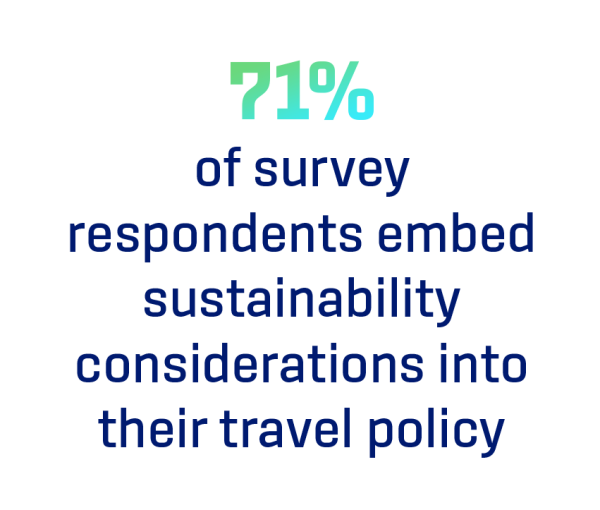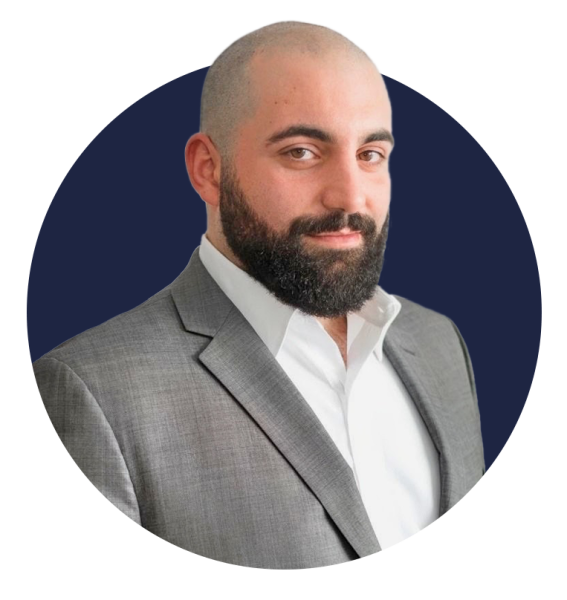The corporate travel industry is undergoing rapid transformation, and sustainability has become a key consideration in travel decision-making. Yet as efforts to build more responsible travel programs are well underway, many organizations are still searching for a clear starting point.
The 2024 GBTA Sustainability Acceleration Challenge shed light on where companies stand in their efforts. It revealed that while progress is being made, many programs still lack the structure, tools, and alignment needed to drive meaningful change.
With these six practical steps, travel managers can help reduce the environmental impact of their company’s business travel. Whether starting from scratch or strengthening an existing program, these actions will help embed sustainability throughout the travel journey.
1. Measure Your Travel Footprint
Those who manage travel should begin by calculating their company’s travel-related carbon footprint. This can begin with air travel and expand to include rail, hotels, and ground transportation as data allows. 
For aviation, there are three primary methods to calculate emissions:
- Fuel-based: The most accurate approach. Factors in aircraft type, fuel burn, load factors, and operational variables.
- Distance-based: Estimates emissions by mileage flown but doesn’t account for aircraft efficiency or flight specifics.
- Spend-based: Uses ticket cost to estimate emissions. (Useful when data is limited, but the least precise.)
Choosing the right methodology isn’t just smart, it’s becoming essential for compliance. With regulations like California’s climate disclosure laws and the EU’s Corporate Sustainability Reporting Directive (CSRD) on the rise, emissions reporting is under increasing scrutiny. Organizations where travel makes up a significant share of its footprint should expect closer audit attention.
2. Set a Climate Goal
With baseline emissions in hand, the next step is to establish a climate target for business travel. Start by reviewing your organization’s existing climate commitments, and use that information to set both long-term and more immediate goals. While a net zero target (e.g., by 2050) provides long-range direction, interim milestones — such as emissions reductions by 2030 — create accountability, enable course correction, and demonstrate year-over-year progress.
For organizations without specific travel targets in place, this step is an opportunity to lead. Defining clear, measurable goals for business travel not only drives meaningful change but also builds trust with stakeholders and helps meet evolving regulatory and investor expectations.
3. Develop a Climate Transition Plan
Goal setting is the starting point, but achieving these targets requires a structured plan tailored to a company’s individual travel program. Travel managers should ensure the plan defines how their organization will reduce travel-related emissions and integrate sustainability into day-to-day operations. 
A climate transition plan should include these key components:
- Investments in Sustainable Aviation Fuel (SAF) certificates: This can reduce aviation emissions by up to 80% on a lifecycle basis. Availability is still limited, but early corporate investment will help accelerate adoption and scale production.
- Traveler behavioral changes: Encourage lower-emission behaviors such as flying economy, selecting direct routes, and opting for newer, fuel-efficient aircraft.
- Supplier strategy: Prioritize airlines with modern fleets, hotel partners with renewable energy investments and eco-friendly certifications, and ground transportation providers offering electric or hybrid options.
- Carbon budgeting: Set an emissions cap for business travel in line with broader climate targets. This helps keep emissions within a predetermined limit and ensures accountability.
These measures should be formalized into a sustainable travel policy — a clear framework that guides decision-making and embeds climate goals into the company culture.
4. Create a Travel Sustainability Program
To drive lasting impact, consolidate sustainability initiatives into a dedicated program that reflects company values. 
“Embedding sustainability into your travel policy isn’t just about adding another checklist item — it revitalizes the entire policy by connecting travelers to a greater purpose. When employees understand the environmental impact of their choices and see that sustainability is a core company value, it naturally reengages them with travel guidelines. This renewed engagement often leads to higher compliance, because travelers feel empowered to make decisions that align with both business goals and our planet’s health.”
– Matt Esper, Director of Sustainability and Social Impact, Direct Travel
The structure of the program will vary by organization but may include:
- Incentives for travelers who make sustainable choices
- Guardrails in the policy to guide behavior
- Engagement tactics such as friendly competitions or gamification
Most importantly, the program should clearly communicate the purpose behind the policy. This will help employees see how their choices contribute to broader environmental and business objectives.
5. Invest in Employee Engagement & Training
A successful sustainable travel program depends on active participation throughout the organization. Regular training and clear communication equips travelers with the knowledge needed to make informed, lower-impact choices.
Workshops, educational resources, and awareness campaigns can foster a culture of sustainability, one where employees understand the “why” behind travel policies and feel empowered to support them. This not only strengthens policy compliance but also drives long-term behavioral change.
6. Offset Unavoidable Emissions Responsibly
Even with a strong reduction strategy in place, some travel-related emissions remain unavoidable. Investing in high-quality, third-party verified carbon offsets can play a complementary role.
Look for offsets that meet credible criteria like those endorsed by the Oxford Principles for Net Zero Aligned Offsetting, which are also recognized by the Science Based Targets initiative (SBTi). These criteria help ensure environmental integrity and alignment with broader climate goals.
While offsets shouldn’t be the foundation of a sustainability strategy, they offer a credible way to address residual emissions as decarbonization efforts continue to scale.
Turn Strategy Into Impact
Building a more sustainable travel program is a complex but achievable goal. It requires clear measurement, defined targets, structured planning, and active engagement across the organization. Luckily, travel managers don’t have to tackle this challenge alone.
A sustainability-minded travel management company (TMC) can be a critical partner in this process. At Direct Travel, we support our clients with the tools, insights, and guidance needed to embed sustainability into their travel decisions at every level. Our Direct View Consulting helps accurately calculate emissions, engage employees and suppliers, and build reports that align with industry standards.
As the business travel landscape continues to evolve, now is the time to act deliberately and partner wisely. If your organization is ready to expand your sustainability efforts, get in touch with the Direct Travel team. We’re here to help you build a program that delivers value for both your business and the planet.




